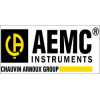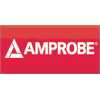Pressure Meters / Manometers
Pressure measurement is the analysis of an applied force by a fluid (liquid or gas) on a surface. Pressure is typically measured in units of force per unit of surface area. Many techniques have been developed for the measurement of pressure and vacuum. Instruments used to measure and display pressure in an integral unit are called pressure meters or pressure gauges or vacuum gauges. A manometer is a good example, as it uses the surface area and weight of a column of liquid to both measure and indicate pressure. Likewise the widely used Bourdon gauge is a mechanical device, which both measures and indicates and is probably the best known type of gauge.
A vacuum gauge is a pressure gauge used to measure pressures lower than the ambient atmospheric pressure, which is set as the zero point, in negative values (e.g.: −15 psig or −760 mmHg equals total vacuum). Most gauges measure pressure relative to atmospheric pressure as the zero point, so this form of reading is simply referred to as "gauge pressure". However, anything greater than total vacuum is technically a form of pressure. For very accurate readings, especially at very low pressures, a gauge that uses total vacuum as the zero point may be used, giving pressure readings in an absolute scale.

![KIMO MP 110 [MP110] Micro Manometer (-1000 to 1000Pa Range)](https://indomultimeter.com/image/cache/catalog/Products/KIMO_MP110-350x350.jpg)
![KIMO MP 111 [MP111] Micro Manometer (-1000 to +1000mmH20)](https://indomultimeter.com/image/cache/catalog/Products/KIMO_MP111-350x350.jpg)
![KIMO MP 112 [MP112] Micro Manometer (-2000 to +2000mbar)](https://indomultimeter.com/image/cache/catalog/Products/KIMO_MP112-350x350.jpg)
![KIMO MP 120 [MP120] Manometer with Air Velocity Measurements](https://indomultimeter.com/image/cache/catalog/Products/KIMO_MP120-350x350.jpg)
![KIMO MP 130 [MP130] Micro Manometer for Gas Network Leak Testing](https://indomultimeter.com/image/cache/catalog/Products/KIMO_MP130-350x350.jpg)
![KIMO MP 210 [MP210] Anemometer And Manometer](https://indomultimeter.com/image/cache/catalog/Products/KIMO_MP210-1-350x350.jpg)
![KIMO MP 50 [MP50] Micro Manometer (0 to +1000Pa)](https://indomultimeter.com/image/cache/catalog/Products/KIMO_MP50-1-350x350.jpg)
![KIMO MP 50 [MP50] Micro Manometer (0 to +1000Pa)](https://indomultimeter.com/image/cache/catalog/Products/KIMO_MP50-2-350x350.jpg)
![KIMO MP 55 [MP55] Atmospheric Pressure Micro Manometer (700 to 1100mbar)](https://indomultimeter.com/image/cache/catalog/Products/KIMO_MP55-350x350.jpg)
![KIMO MP 55 [MP55] Atmospheric Pressure Micro Manometer (700 to 1100mbar)](https://indomultimeter.com/image/cache/catalog/Products/KIMO_MP50-3-350x350.jpg)
![KIMO MP51 [MP51] Pressure Gauge (Micromanometer), -1000 to +1000 mmH2O](https://indomultimeter.com/image/cache/catalog/Products/KIMO_MP51-1-350x350.jpg)
![MRU DM 9600 [912200] Manometer 30 inH2O (75 mbar)](https://indomultimeter.com/image/cache/catalog/Products/MRU_DM9600-350x350.jpg)


![Testo 312-2 [0632 0313] Precision Pressure Meter, up to 40/200 hPa](https://indomultimeter.com/image/cache/catalog/Products/Testo_3122-350x350.jpg)
![Testo 312-3 [0632 0314] Pressure Meter, up to 300/6000 hPa](https://indomultimeter.com/image/cache/catalog/Products/Testo_3123-350x350.jpg)
![Testo 510-KIT [0563 0510] Differential Pressure Measurement Kit](https://indomultimeter.com/image/cache/catalog/Products/Testo_510-350x350.jpg)
![Testo 510-KIT [0563 0510] Differential Pressure Measurement Kit](https://indomultimeter.com/image/cache/catalog/Products/Testo_510-1-350x350.jpg)
![Testo 511 [0560 0511] Pocket-Sized Absolute Pressure Meter](https://indomultimeter.com/image/cache/catalog/Products/Testo_511-350x350.jpg)
![Testo 512 [0560 5126] Differential Pressure and Flow Velocity Meter (0 to 2 hPa (2 to 17.5 m/s, 395 to 3445 fpm)](https://indomultimeter.com/image/cache/catalog/Products/Testo_512-350x350.jpg)
![Testo 521-1 [0560 5210] High Precision Differential Pressure Meter, 0 to 100 hPa, 0.2 hPa](https://indomultimeter.com/image/cache/catalog/Products/Testo_521-350x350.jpg)
![Testo 526-1 [0560 5280] Differential Pressure Meter, 0 to 2000 hPa](https://indomultimeter.com/image/cache/catalog/Products/Testo_526-1-350x350.jpg)
![Wohler DM2000 [7006] Digital Manometer](https://indomultimeter.com/image/cache/catalog/Products/Wohler_DM2000-350x350.jpg)



















